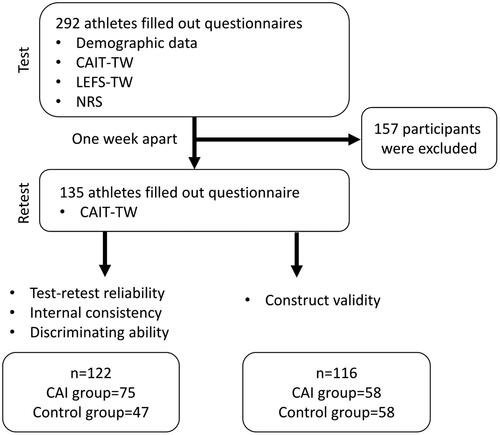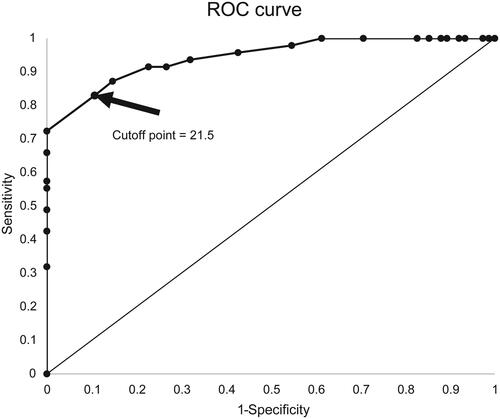Figures & data
Figure 1. The flow chart of data collection. CAIT-TW: Taiwan-Chinese version of Cumberland Ankle Instability Tool; LEFS-TW: Taiwan-Chinese version of Lower Extremity Function Scale; NRS: Numeric Rating Scale; CAI: chronic ankle instability.

Table 1. Taiwan-Chinese version of Cumberland Ankle Instability Tool.
康柏蘭腳踝穩定性評估量表 在以下問題中, 請選擇最能描述您腳踝狀況的選項:
Table 2. Participants’ characteristics for testing construct validity.
Table 3. Participants’ characteristics in evaluating test-retest reliability, internal consistency, and discriminating ability.
Table 4. Test-retest of Taiwan-Chinese version of Cumberland Ankle Instability Tool.
Table 5. Internal consistency of Taiwan-Chinese version of Cumberland Ankle Instability Tool.
Figure 2. The receiver operating characteristic (ROC) curve of Taiwan-Chinese version of Cumberland Ankle Instability Tool. The area under the curve was 0.94.

Table 6. Sensitivity, specificity and Youden index of Taiwan-Chinese version of Cumberland Ankle Instability Tool.
